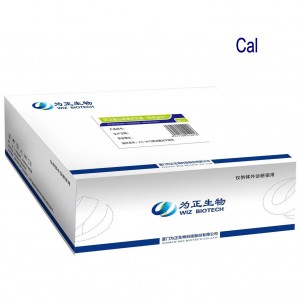It is well known that the PSA is not a very accurate screening test. There are other attempts to improve upon it., including using MRIs to determine whether someone has a lesion that corresponds to the elevated PSA or not.
© 2017 Asian Pacific Society of Respirology The management of severe asthma is complex. Multidimensional assessment (MDA) of specific traits has been proposed as an effective strategy to manage severe asthma, although it is supported by few prospective studies. We aimed to systematically review the literature published on MDA in severe asthma, to identify the traits included in MDA and to determine the effect of MDA on asthma-related outcomes. We identified 26 studies and classified these based on study type (cohort/cross-sectional studies; experimental/outcome studies; and severe asthma disease registries). Study type determined the comprehensiveness of the assessment. Assessed traits were classified into three domains (airways, co-morbidities and risk factors). The airway domain had the largest number of traits assessed (mean ± SD = 4.2 ± 1.7) compared with co-morbidities (3.6 ± 2.2) and risk factors (3.9 ± 2.1). Bronchodilator reversibility and airflow limitation were assessed in 92% of studies, whereas airway inflammation was only assessed in 50%. Commonly assessed co-morbidities were psychological dysfunction, sinusitis (both 73%) and gastro-oesophageal reflux disease (GORD; 69%). Atopic and smoking statuses were the most commonly assessed risk factors (85% and 86%, respectively). There were six outcome studies, of which five concluded that MDA is effective at improving asthma-related outcomes. Among these studies, significantly more traits were assessed than treated. MDA studies have assessed a variety of different traits and have shown evidence of improved outcomes. This promising model of care requires more research to inform which traits should be assessed, which traits should be treated and what effect MDA has on patient outcomes.
DNA-damaging agents stimulate the expression of LMP1.p53 protein is stabilized in response to DNA damage as an integral part of the DDR pathway (49). Because LMP1 expression is associated with constitutive p53 expression (Fig. 1B), it was of interest to determine whether DNA damage could stimulate LMP1 expression in EBV-transformed cells. IB4, SavIII, and P2 cells were exposed to various DNA-damaging agents, such as cytosine β-d-arabinofuranoside (Ara-C), 5-fluorouracil (5-FU), and X-ray irradiation. Because the TP53 status in SavIII and P2 lines is unknown, exons 5 to 8 of TP53 in both lines were sequenced; the exon sequences in both lines were identical to wild-type (wt) TP53 exons (see Materials and Methods for details). Approximately 90% of TP53 mutations are localized between domains including exons 5 to 8 in cancers (50). Both p53 and LMP1 levels were increased in a time-dependent manner in response to the DNA-damaging treatments (Fig. 2A and B). Because those treatments cause DNA damage through different mechanisms, the data implied that DNA damage per se is capable of stimulating LMP1 expression. In addition, the data provide additional support of the idea that LMP1 is associated with p53 expression (Fig. 1). Moreover, because P2 is lacking STAT1 gene (51), the DNA damage-mediated LMP1 stimulation was not STAT1 dependent.
Summary: Background: In asthma, the airway inflammatory phenotype influences clinical characteristics and treatment response. Although induced sputum is the gold standard test for phenotyping asthma, a more accessible method is needed for clinical practice. Objective: To investigate whether white blood cell counts and/or their derived ratios can predict sputum eosinophils or neutrophils in uncontrolled asthma. Methods: This cross-sectional study evaluated 164 treated but uncontrolled asthmatic patients with sputum induction and blood collection. Receiver-operating characteristic (ROC) curves were used to assess the relationship between blood and sputum parameters. Results: There was a significant positive relationship between blood eosinophil parameters and the percentage of sputum eosinophil count. A weak but significant correlation was found between sputum neutrophil percentage and blood neutrophil percentage (r = 0.219, P = 0.005). ROC curve analysis identified that blood eosinophil percentage count was the best predictor for eosinophilic asthma, with an area under the curve (AUC) of 0.907 (P < 0.001). The optimum cut-point for blood eosinophil percentage was 2.7%, and this yielded a sensitivity of 92.2% and a specificity of 75.8%. The absolute blood eosinophil count was also highly predictive with an AUC of 0.898 (P < 0.0001) at a blood eosinophil cut-off of 0.26 × 10<sup>9</sup>/L. The blood eosinophil/lymphocyte ratio (ELR) and eosinophil/neutrophil ratio (ENR) were increased in eosinophilic asthma, and the neutrophil/lymphocyte ratio (NLR) was increased in neutrophilic asthma. Neutrophilic asthma could also be detected by blood neutrophil percentages and NLR, but with less accuracy. Conclusions and Clinical Relevance: Blood eosinophil counts and derived ratios (ELR and ENR) can accurately predict eosinophilic asthma in patients with persistent uncontrolled asthma despite treatment. Blood neutrophil parameters are poor surrogates for the proportion of sputum neutrophils. Blood counts may be a useful aid in the monitoring of uncontrolled asthma. © 2014 John Wiley & Sons Ltd.

Then, instead of the issue being posed in terms of the asymptomatic, couch-potato patient thinking about whether or not to have PSA testing as a special medical event, it’s really posed in a doctor-patient interview with a specific PSA result on the table between them. How easy would it be, then, for the physician to tell the patient he can/should/ought to ignore what he’s just been told is a PSA level two or three hundred percent of normal?
The release directly compares this experimental blood test to current practice employing the PSA blood test, but there aren’t enough details about how the comparison was made for readers to get a sense of whether the claim of superiority has a reasonable basis. There is no justification for stating it is 94% accurate compared to PSA testing being 33% accurate at identifying high-grade tumors at this preliminary stage.
So far, cross-over high-intensity intermittent exercise studies have lacked relevant data for average exercise-induced 5th generation cTnT elevations. Thus, a priori sample size calculation was based on an average value of 6 ng/L after MCT; that is roughly the 50th percentile of a reference population for this assay. Based on research findings in adolescent basketball players11 we estimated an increase of cTnT above the cut-off (99th percentile, 14.5 ng/L) after RST for half of the potential sample, with the other half showing cTnT activity comparable to the MCT session (6 ng/L). Based on these assumptions, sample size calculations with an effect size of 1.3 and α-error probability of 0.05 require 10 participants to detect significant effects (G*Power 3.1.9.2, University of Kiel). Taking into account a possible drop-out rate of one third, we considered a sample size of thirteen persons as appropriate to study effects of exercise regimen on cTnT-release.
Yet, the fact is, Zionism could have got nowhere without significant Gentile support and cooperation, and couldn’t exist today in its present situation for a month without US superpower largess.

Other than EBV primary infection, EBV latency cells may experience various stresses in native environments. Therefore, it is tempting to speculate that EBV may sense various cellular stresses via p53 and adjust LMP1 expression to counteract stress-related cellular damages to ensure the survival of the EBV-infected cells (Fig. 7).
Although similar effects on apoptotic cell death, ROS generation, tissue pH and infarct size were observed, exploration of the MAPK pathway revealed that there may be differences in the upstream effects of mechanical postconditioning and hydrogen rich saline with lactic acid. Mechanical postconditioning increased the phosphorylation of ERK and inhibited the phosphorylation of p38 and JNK. The results of this experiment showed that hydrogen rich saline decreased the phosphorylation of both p38/JNK and ERK which is consistent with earlier studies48,49. Hydrogen rich saline alone also inhibited the expression of P-p38/JNK, but it did not inhibit the expression of TNFα and Caspase-8 or provide the same degree of cardioprotection as mechanical as seen with mechanical postconditioning. Despite the incongruent effects on P-ERK demonstrated by mechanical postconditioning and co-administration of lactic acid and hydrogen rich saline, the latter still resulted in inhibition of TNFα and Caspase-8 expression. Nearly the same degree of cardioprotection was seen with this combination when compared to mechanical postconditioning as well. This phenomenon might be attributable to the regulation of P-ERK by other unknown pathways involved in postconditioning.
CT Premix: Taq DNA polymerase (Nồng độ gốc: 12,5U/μl; Nồng độ cuối: 1,25U/μl); CT F/R, IPC F/R, CT prube và IPC probe (Nồng độ gốc: 100 pmoles; Nồng độ cuối: 15 pmoles), Chứng dương (PC) CT DNA: 15 μl/ống, Chứng dương nội sinh (IPC) DNA: 15 μl/ống, DEPC-DW (cho chứng không khuôn mẫu – NTC): 15μl/ ống
Henke, A., Huber, S., Stelzner, A. & Whitton, J. L. The role of CD8+ T lymphocytes in coxsackievirus B3-induced myocarditis. J Virol. 69, 6720–6728 (1995).
Translocation of a gut pathobiont drives autoimmunity in mice and humans | Cpn-Igm Related Video:
Reliable good quality and very good credit standing are our principles, which will help us at a top-ranking position. Adhering to your tenet of "quality 1st, purchaser supreme" for Digestion Analyzer , Colloidal Gold Rapid Test Hiv , Stimulating Diagnostic Kit , If you need to have any of our merchandise, or have other items to be produced, make sure you send us your inquiries, samples or in depth drawings. Meanwhile, aiming to develop into an international enterprise group, we look forward to receiving offers for joint ventures and other cooperative projects.






